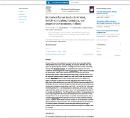| dc.contributor.author | Annah, M. Ondieki | |
| dc.contributor.author | Zephania, Birech | |
| dc.contributor.author | Kenneth, A. Kaduki | |
| dc.contributor.author | Catherine, K. Kaingu | |
| dc.contributor.author | Anne, N. Ndeke | |
| dc.contributor.author | Loyce, Namanya | |
| dc.date.accessioned | 2023-10-13T07:39:10Z | |
| dc.date.available | 2023-10-13T07:39:10Z | |
| dc.date.issued | 2022-08 | |
| dc.identifier.citation | Ondieki, A. M., Birech, Z., Kaduki, K. A., Kaingu, C. K., Ndeke, A. N., & Namanya, L. (2022). Biomarker Raman bands of estradiol, follicle-stimulating, luteinizing, and progesterone hormones in blood. Vibrational Spectroscopy, 122, 103425. | en_US |
| dc.identifier.uri | https://doi.org/10.1016/j.vibspec.2022.103425 | |
| dc.identifier.uri | https://hdl.handle.net/20.500.12504/1448 | |
| dc.description.abstract | Variation of the levels of reproductive hormones outside the normal range indicates health problems that include cancer, infertility, and menstrual difficulties. This work reports on a potentially novel method of screening four (estradiol, follicle-stimulating hormone, FSH; luteinizing hormone, LH; and progesterone) hormones. The work involved first determining the characteristic Raman spectra of their standards. Thereafter, the Raman marker bands of the respective hormones in blood were determined experimentally. Simulate samples were prepared by mixing, at varying concentrations, the respective standard hormone samples with male mouse’s blood and concentration-sensitive Raman bands identified upon 785 nm laser excitation. The samples were applied, separately, onto prepared conductive silver paste smeared microscope glass slides. Spectral data analyses were done using both Principal Component Analysis (PCA) and Analysis of variance (ANOVA). The spectral profiles of respective standard hormones (with no blood) displayed common bands at 483, 1005, 1244, and 1455 cm−1 which were tentatively attributed to C-C stretching of glucose, lipid bands, and CH2/CH3 scissoring respectively. Other bands were observed at 542 cm−1 (for LH and progesterone), 859 cm−1 (for estradiol and FSH), 837 cm−1 (for FSH and LH) and at 1360 cm−1 (for progesterone). In blood, a large comparative Raman spectral intensity variation was observed at around 483 and 1450 cm−1 in LH; 902 and 1569 cm−1 in estradiol. These bands could be used as biomarker Raman bands for the respective hormones. The bands centered at 668 and 1219 cm−1 displayed almost identical intensity variation in the four hormones (estradiol, FSH, LH, and progesterone) and could be used as marker bands for level determination for the four combined. This work has shown the power of Raman spectroscopy in potential hormone concentration level determination when respective biomarker bands are employed. | en_US |
| dc.language.iso | en | en_US |
| dc.publisher | Vibrational Spectroscopy | en_US |
| dc.subject | Raman spectra | en_US |
| dc.subject | Luteinizing hormone, | en_US |
| dc.subject | Raman bands | en_US |
| dc.subject | Progesterone hormones | en_US |
| dc.subject | Estradiol, follicle-stimulating hormone | en_US |
| dc.title | Biomarker Raman bands of estradiol, follicle-stimulating, luteinizing, and progesterone hormones in blood | en_US |
| dc.type | Article | en_US |

